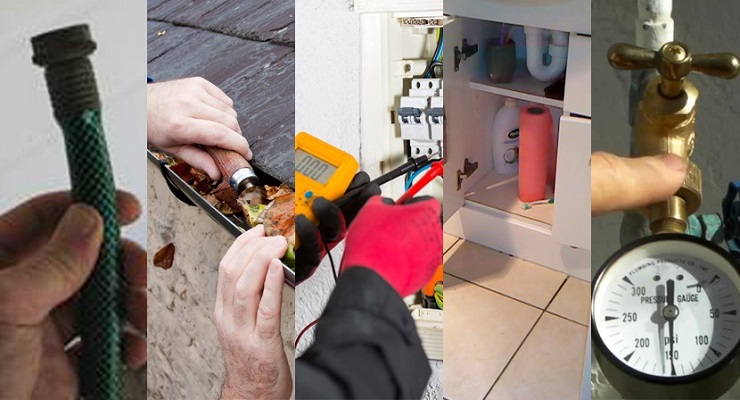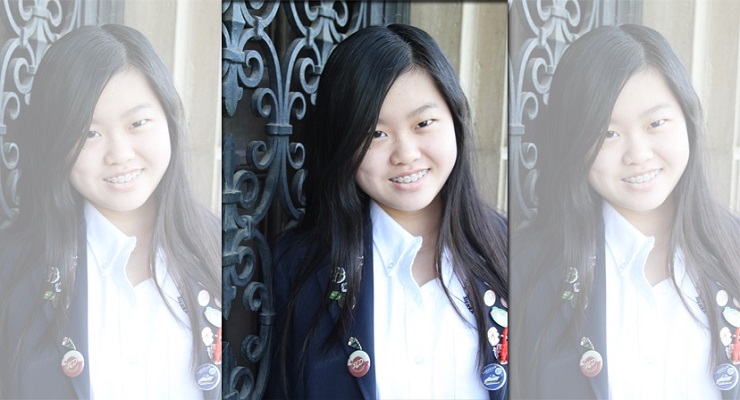 A sensor to help emergency vehicles measure the speed and depth of flood waters. A microorganism that can decompose BPA. A hydrogel injection that can help patients heal after a heart attack.
A sensor to help emergency vehicles measure the speed and depth of flood waters. A microorganism that can decompose BPA. A hydrogel injection that can help patients heal after a heart attack.
The students behind these innovative concepts were among those selected to receive the CTY Cogito Research Award, a prize given annually to middle and high school students from around the world who demonstrate initiative, creativity, and promise in their STEM research-project proposals. The students and student teams who submitted the 10 winning projects will receive $599 grants and guidance from a mentor to develop their ideas. Winners will submit a final report on the results of their research later this year.
A CTY judging panel selected the winning proposals from more than 250 student applications based on overall quality and promise to achieve compelling research results.
The student researchers will use the funds to purchase equipment, rent lab space, or pay for other project-related needs. They will blog about their progress on the CTY website.
First awarded in 2014, the CTY Cogito Research Awards foster the development of promising young scientists. Past winners include Intel Science Talent Search 2016 finalist Maya Varma and 2015 Google Science Fair Lego Education Builder Award winner Anurudh Ganesan.
This year’s awards were funded by the Thakor Family Fund, which was established by CTY parent and donor Nitish V. Thakor and his family.
“Congratulations to this year’s CTY Cogito Research Award winners,” said Elaine Tuttle Hansen, executive director of the Johns Hopkins Center for Talented Youth. “We started this program two years ago hoping to inspire and enable students to confront tough scientific problems, and work to find answers. What we’ve seen so far are projects that demonstrate ingenuity and great promise.”
The 2016 CTY Cogito Research Awards winners are:
“Novel Strip for Accurate, Rapid, and Inexpensive Detection of Small Cell Lung Cancer.” Proposal submitted by Jessika Baral, 16, of Fremont, Calif., an 11th grader at Mission San Jose High School. The deadliest form of lung cancer, small cell lung cancer typically is discovered after symptoms develop and the cancer has metastasized. The disease is usually diagnosed via expensive CT scans and invasive biopsies. Jessika is planning to create a diagnostic strip that doctors can use to detect small cell lung cancer by measuring protein levels in patients’ blood samples—a less invasive method that can detect the cancer early and save lives.
“Photosynthetic Protein Production through Protein Transformation.” Proposal submitted by Laura Xinyu Chen, 16, of Pasadena, Calif., Victoria Chen, 14, of West Covina, Calif., and Evina Wang, 15, of San Gabriel, Calif. These three 10th graders at Alverno High School want to create hydrogen biofuel. They plan to photoelectrolyze water with sunlight by inserting the Photosystem II protein gene into E. coli bacteria. In doing so, they hope to separate hydrogen from water so that it can be burned for fuel—one that is energy-dense and has minimal carbon emissions.
“Creating a More Efficient Cellulase for Biofuel Production.” Proposal submitted by Benjamin Cheng, 13, of Foster City, Calif., a ninth grader at San Mateo High School. Biofuels are a promising eco-friendly alternative to fossil fuels, but their production is hindered by the need for costly enzymes called cellulases that degrade and ferment the biomass, a crucial part of the production process. Benjamin wants to create a more efficient cellulase that will reduce the cost of producing biofuels.
“Safety Sensor Array for Flood Water.” Proposal submitted by Anthony Clendenen, 15, of Graham, Wash., who is homeschooled. During a flood, rescue workers sometimes cannot reach endangered people because of an inability to tell if rising water is safe to drive through, forcing them to find an alternate route or abandon a rescue altogether. Anthony plans to design and build a sensory device that be attached to the front of an emergency vehicle, such as a firetruck, and will measure the speed and depth of the current and detect any large debris, enabling first-responders to know instantly the risk of crossing the flood waters—saving time and potentially lives.
“Micropropagation of Cypripedium reginae.” Proposal submitted by Katherine Duan, 13, and Alexander Kish, 13, of Hanover, N.H. Katherine and Alexander, eighth graders at Crossroads Academy, plan to devise a way to micropropagate or clone the Showy Lady’s Slipper, an endangered variety of orchid native to New England. Micropropagation is the most efficient and rapid way of generating large numbers of plants. If the two classmates succeed, they will have produced a potential model for restoring other endangered plants to the wild.
“An Innovative Way to Clean Up Our Landfills.” Proposal submitted by Megha Gopal, 13, of New Hyde Park, N.Y., an eighth grader at New Hyde Park Memorial Junior/Senior High School. Megha plans to identify a fungus or other microorganism that can efficiently decompose Bisphenol A (BPA), an industrial chemical used to make plastics. Some studies have suggested that BPA, present in everything from DVDs to water bottles, might pose a threat to the stability of ecosystems. If Megha succeeds, the microorganism could be released into landfills, providing an environmentally safe and economical way to eliminate BPA from the environment.
“Synthesis of Inflammation Responsive Pro-Geling Cyclic Peptides for Targeted Myocardial Tissue Repair.” Proposal submitted by Bridgette Han, 15, of Palo Alto, Calif., a 10th grader at Phillips Exeter Academy. Newly designed hydrogels can repair heart tissue after a heart attack, but they must be injected directly into the heart through a catheter. Bridgette wants to develop a new type of hydrogel that paramedics could inject intravenously after a heart attack—a less invasive technique that could enable the patient’s heart to begin to repair itself immediately.
“Optimization of Brick Thermal Conductivity and Crushing Strength.” Proposal submitted by Isha Mohapatra, 15, of Easton, Pa., a ninth grader at Moravian Academy. Isha is planning to contribute to the field of eco-friendly building materials by engineering a better brick—one that is harder to crush and provides better insulation, thereby lowering energy costs while reducing the use of fossil fuels that contribute to climate change.
“A Natural and Potentially Lower Cost Approach to Lowering Food Cholesterol: Testing Cholesterol Assimilation by Gastrointestinal Bacteria Strains and OTC Probiotic Supplements.” Proposal submitted by Anika Sanyal, 14, of Los Altos, Calif., a ninth grader at Homestead High School. High cholesterol is typically treated with statins, drugs that are effective but expensive and can cause such side effects as muscle weakness and neuropathy. Anika wants to find a more natural treatment. She plans to test the effectiveness of over-the-counter probiotic supplements and naturally occurring bacterial strains in reducing low-density lipoprotein (LDL) cholesterol, commonly referred to as “bad” cholesterol.
“Does Sucrose Provide an Economical Way to Preserve Biological Specimens for DNA Analysis?” Proposal submitted by Alexandra So, 15, of Los Angeles, Calif., a ninth grader at Harvard Westlake School. In most developing countries, DNA analysis of cancer—crucial to newer, more effective diagnoses and targeted treatments—is rare because preserving the specimens via freeze-drying is costly and requires equipment that must constantly be maintained. Alexandra is looking to develop an inexpensive method of preserving specimens using sucrose, a sugar she believes can protect DNA at room temperature. If she is correct, she hopes her method can also be used to preserve other biomolecules, such as RNA and phosphoproteins.
About The Johns Hopkins Center for Talented Youth (CTY)
A nonprofit at one of the nation’s premier universities, CTY identifies academic talent in the world’s brightest K-12 learners and supports their growth with accredited summer and online programs, as well as family learning opportunities, services, and resources. http://cty.jhu.edu/












